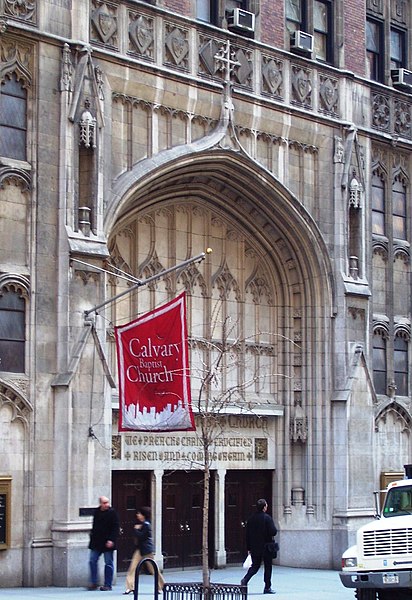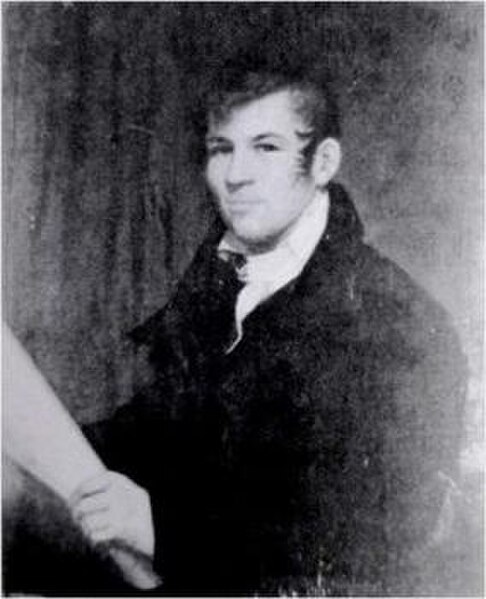57th Street is a broad thoroughfare in the New York City borough of Manhattan, one of the major two-way, east-west streets in the borough's grid. As with Manhattan's other "crosstown" streets, it is divided into its east and west sections at Fifth Avenue. The street runs from a small park overlooking the East River in the east to the West Side Highway along the Hudson River in the west. 57th Street runs through the neighborhoods of Sutton Place, Midtown Manhattan, and Hell's Kitchen from east to west.
Apartment buildings lining East 57th Street between First Avenue and Sutton Place
The Hearst Tower at 300 West 57th Street
Art Students League at 215 West 57th Street
Calvary Baptist Church entrance at 123 West 57th Street
Commissioners' Plan of 1811
The Commissioners' Plan of 1811 was the original design for the streets of Manhattan above Houston Street and below 155th Street, which put in place the rectangular grid plan of streets and lots that has defined Manhattan on its march uptown until the current day. It has been called "the single most important document in New York City's development," and the plan has been described as encompassing the "republican predilection for control and balance ... [and] distrust of nature". It was described by the Commission that created it as combining "beauty, order and convenience."
Simeon De Witt
The only known image of John Randel Jr., the Commission's chief surveyor, by an unknown artist, probably Ezra Ames.
The park-like grounds of the American Museum of Natural History – called "Theodore Roosevelt Park" since 1958, but officially part of Central Park – is the only one of the planned public spaces of the Commissioners' Plan which still exists; it was to be "Manhattan Square".
William M. "Boss" Tweed (1870)








